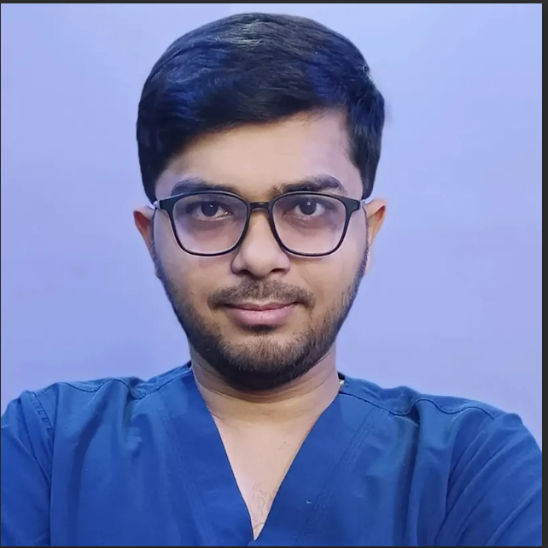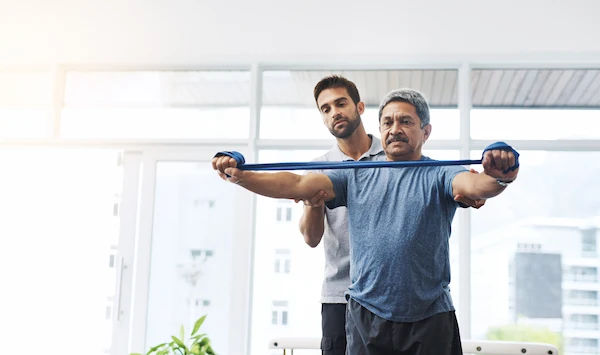Shoulder Pain Common Reasons And What To Do
Discover the common reasons for shoulder pain, from injuries to arthritis, and learn effective ways to relieve discomfort and prevent further issues.

Written by Dr. Siri Nallapu
Reviewed by Dr. Shaik Abdul Kalam MD (Physician)
Last updated on 25th Oct, 2025

Introduction
Shoulder pain can disrupt your day-to-day life—from reaching into a cupboard to sleeping on your side. Because the shoulder is the body’s most mobile joint, it’s also one of the most prone to strain, inflammation, and injury. Many people search for “shoulder pain reasons” because the discomfort can range from a dull ache to sharp pain when lifting the arm, reaching behind the back, or lying down. In this guide, you’ll learn the common reasons for shoulder pain, how to tell what might be going on, and what to do next. We’ll cover anatomy in plain language, practical self-care tips, when to seek urgent care, and what diagnosis and treatment typically look like. We’ll also answer frequently asked questions and share expert-backed resources for deeper reading. If your symptoms persist beyond two weeks or interfere with daily activities, consult a doctor online with Apollo24|7 for further evaluation.
How Your Shoulder Works: Anatomy That Explains Pain
Your shoulder is more than a single joint. It’s a “shoulder complex” of four articulations that need to cooperate smoothly: the glenohumeral joint (ball-and-socket), acromioclavicular (AC) joint at the top of the shoulder, sternoclavicular joint at the chest, and the scapulothoracic interface (where the shoulder blade glides over the ribs). This design provides a huge range of motion but relies on soft tissues to keep things stable and pain-free.
The rotator cuff—four muscles and their tendons—centres the ball in the socket as you lift and rotate your arm. Tendons of the supraspinatus (top), infraspinatus and teres minor (back), and subscapularis (front) can get irritated with repetitive overhead activity or age-related changes. The subacromial bursa, a fluid-filled cushion, can become inflamed (bursitis) when tissues are overloaded or pinched. The biceps tendon (long head) runs through the front of the shoulder and can cause pain in the bicipital groove with lifting or reaching.
Deep in the joint, the labrum (a rim of cartilage) deepens the socket; tears can cause catching, clicking, or pain with throwing. The AC joint can become arthritic and tender to touch on top of the shoulder. Finally, nerves from your neck (cervical spine) supply the shoulder; neck issues like cervical radiculopathy can refer pain into the shoulder and arm. Understanding these structures helps you link a specific shoulder pain reason to certain movements—like pain when lifting your arm above shoulder height (often supraspinatus or impingement) or pain in the front of the shoulder (often biceps tendon).
Consult Top Specialists
The Most Common Reasons for Shoulder Pain
Shoulder pain reasons fall into a few broad buckets:
• Tendinopathy and bursitis: Overuse or age-related changes cause tendon thickening and bursal irritation, especially in the rotator cuff.
• Impingement: Soft tissues get pinched under the acromion when reaching overhead, causing sharp pain, especially between 60–120 degrees of abduction.
• Rotator cuff tears and labral injuries: Tears can be partial or full-thickness, often after a fall or from gradual wear; labral tears are common in throwers and can cause clicking.
• Frozen shoulder (adhesive capsulitis): Pain and stiffness that evolves over months, particularly in people with diabetes or after immobilisation.
• Arthritis: Osteoarthritis (wear-and-tear) or inflammatory forms (like rheumatoid arthritis) affecting the glenohumeral or AC joint.
• Instability and dislocation: The ball partially or fully slips out of the socket, often in younger athletes; recurrent episodes may follow.
• Referred pain: Neck (cervical radiculopathy), heart (especially left shoulder pain during a heart attack), diaphragm, or gallbladder issues can mimic shoulder pain.
Prevalence-wise, shoulder pain accounts for about 1% of general practice consultations, and point prevalence in the community is commonly reported between 7–26% depending on the population studied. A quick movement map:
• Pain at night lying on the side: suggests rotator cuff or bursitis.
• Pain on top of shoulder with cross-body reach: think AC joint.
• Weakness lifting above shoulder height: consider supraspinatus or tear.
• Tingling into the hand or pain with neck rotation: consider cervical root involvement.
Overuse, Tendinopathy, and Bursitis: Why It Hurts to Lift Your Arm
If your shoulder started aching gradually, especially after new activity (painting a ceiling, new gym routine, more typing with poor posture), tendinopathy or bursitis is a likely reason for shoulder pain. Tendons adapt slowly to load. Rapid increases or repetitive overhead motions can outpace healing, causing fibre disruption, thickening, and painful sensitivity. The subacromial bursa may also inflamed, leading to pain when you lift your arm to the side or lie on that shoulder at night.
Classic signs:
• Achy pain on the outer upper arm, worse with reaching overhead or behind your back.
• Painful arc: sharper pain between shoulder height and overhead, easing once fully overhead.
• Night pain when lying on the affected side.
Early self-care:
• Relative rest, not total rest. Reduce painful overhead loads for 1–2 weeks while maintaining gentle pain-free range of motion.
• Ice 10–15 minutes after painful activity during the first 48–72 hours, then try brief heat before mobility work.
• Short course of NSAIDs may help pain and inflammation if appropriate for you; check with a clinician first.
• Progressive loading: start with isometrics (pain-free holds) and then light strengthening of rotator cuff and scapular stabilisers as pain allows.
Shoulder Impingement: Pinching Pain Overhead
Impingement is less a diagnosis and more a description: tissues are getting pinched in the subacromial space during certain movements. Poor scapular control, rounded shoulders, or repetitive overhead work can narrow this space. People often report sharp pain when lifting the arm between 60–120 degrees, discomfort reaching into the back seat of a car, and pain when sleeping on the affected side.
Why mechanics matter:
• The shoulder blade (scapula) must upwardly rotate and tilt backward as you raise your arm. If it lags (scapular dyskinesis), soft tissues are squeezed.
• Thoracic spine stiffness and forward head posture reduce clearance overhead.
• Weakness in the lower trapezius and serratus anterior undermines healthy upward rotation.
What helps:
• Posture “snacks”: every 30–60 minutes, perform two reps of shoulder blade squeezes and two deep breaths to reset thoracic posture.
• Exercise: wall slides, serratus punches, and prone Y/T lifts. Start light and build gradually, 2–3 times weekly.
• Technique: if you lift weights, avoid “shrugging” the shoulder toward your ear on pressing movements. Emphasise mid-back engagement.
• For desk workers, elevate the screen, keep the keyboard close, and support forearms.
Evidence suggests many cases improve with targeted physical therapy focusing on rotator cuff and scapular stabilisers; injections can provide short-term relief if pain blocks rehab. If your pain is sharp, persistent, and causes night waking, a clinician may consider an ultrasound to evaluate bursitis or tendon thickening.
Rotator Cuff and Labrum Injuries: From Strain to Tear
Rotator cuff problems span from irritation to partial or full-thickness tears. Tears can follow a fall or develop over time, especially after age 40–50 [2][6]. Symptoms include weakness lifting the arm above shoulder height, difficulty holding items at arm’s length, and night pain. A labral tear, common in throwers or after a dislocation, may create catching, clicking, or a sense of instability.
Diagnosis:
• History and exam: strength testing, specific maneuvers (e.g., empty can, external rotation tests) help localise the involved tendon.
• Imaging: Ultrasound can detect cuff tears and bursitis; MRI provides detailed views, especially for labral injuries.
Treatment pathways:
• Many partial tears improve with structured physical therapy: progressive strengthening of rotator cuff and periscapular muscles, flexibility, and load management.
• Corticosteroid injections may help reduce pain to enable rehab; benefits are often short-term and should be used judiciously.
• Surgery is considered for full-thickness tears with significant weakness, traumatic tears in active individuals, or failed conservative care. Post-op rehab is essential.
Consult Top Specialists
Frozen Shoulder: Stiffness First, Then Pain
Frozen shoulder (adhesive capsulitis) is marked by a progressive loss of motion and pain that can persist for months to years. It often begins after a period of immobilisation (e.g., post-surgery) or occurs idiopathically. People with diabetes and thyroid disease have a higher risk. Phases:
• Freezing (2–9 months): increasing pain and stiffness, especially external rotation (e.g., reaching behind the head).
• Frozen (4–12 months): pain may lessen, but stiffness remains; daily tasks like reaching a back pocket are difficult.
• Thawing (6–24 months): range of motion gradually returns.
Management:
• Gentle, consistent mobility: short, frequent sessions (3–5 minutes, 3–5 times daily) typically beat long, infrequent bouts.
• Heat before stretching to reduce discomfort; ice after if sore.
• Consider image-guided hydrodilatation or corticosteroid injection for pain relief and to facilitate progress in physical therapy.
• Surgery (capsular release) is reserved for refractory cases.
Arthritis and Instability: Wear-and-Tear vs. Looseness
Arthritis
• Osteoarthritis wears the joint cartilage over time, causing deep, achy pain, stiffness, and sometimes grinding (crepitus). It can affect the main ball-and-socket joint or the AC joint on top of the shoulder.
• Inflammatory arthritis (like rheumatoid) presents with morning stiffness, swelling, and pain in multiple joints; systemic symptoms are clues.
Instability
• Dislocation or subluxation (partial slip) occurs when the ball moves out of the socket, often during sports or falls. Younger people are more prone to recurrent instability.
• Symptoms: apprehension with the arm in a “throwing” position, clicking, or a sense of slipping. Labral tears frequently accompany instability.
Management:
• Arthritis: activity modification, anti-inflammatories, targeted strengthening to support the joint, and injections may help. Advanced cases may benefit from shoulder replacement (anatomic or reverse).
• Instability: initial reduction (for dislocation), rest in a sling briefly, then focused rehab for rotator cuff and scapular stabilisers. Surgery may be needed for recurrent dislocations.
Neck and Referred Pain: When the Shoulder Isn’t the Source
Not all shoulder pain originates in the shoulder. Cervical radiculopathy—irritation or compression of a nerve root in the neck—can cause pain radiating into the shoulder blade, arm, or hand with numbness or tingling. Pain that worsens when turning or tilting the head, or relief when placing the hand on the head (“shoulder abduction relief sign”), suggests a neck source.
Serious referred pain:
• Heart: Left shoulder or arm pain with chest pressure, shortness of breath, sweating, nausea, or lightheadedness is a medical emergency—call emergency services immediately.
• Diaphragm or gallbladder: Right shoulder pain with abdominal symptoms can signal gallbladder disease. Lung issues (like a pulmonary apex tumour) may cause shoulder blade pain.
Home clues it’s the neck:
• Neck motion changes the pain.
• Tingling or electric-like pain down the arm.
• Weakness in a specific muscle group.
If you suspect the neck, gentle cervical mobility, chin tucks, and thoracic extensions may help, but seek evaluation if there’s arm weakness, persistent numbness, or worsening pain. Related terms: cervical radiculopathy shoulder pain, referred left shoulder pain heart attack.
Diagnosis: What to Expect at the Clinic
A clinician will start with your story: where it hurts, what movements trigger pain, and how it began. The physical exam includes:
• Inspection and palpation (tender spots on top of the shoulder suggest AC joint).
• Range-of-motion tests (limitations in external rotation point toward frozen shoulder).
• Strength testing (e.g., resisted abduction, external rotation).
• Special tests for impingement, biceps, labrum, and instability.
Imaging:
• X-rays: best for fractures, arthritis, and AC joint changes.
• Ultrasound: useful for rotator cuff tendons and bursitis, dynamic impingement.
• MRI: detailed view of tendons, labrum, and cartilage; often reserved if surgery is being considered or diagnosis remains unclear.
Labs: If inflammatory arthritis is suspected, blood tests like ESR, CRP, and rheumatoid factor may be ordered. Vitamin D deficiency can contribute to generalised musculoskeletal pain; consider checking if you have widespread aches or bone tenderness. Apollo24|7 offers convenient home collection for tests like vitamin D or HbA1c, especially if diabetes is present and you have frozen shoulder risk.
If your condition does not improve after trying self-care for 10–14 days, book a physical visit to a doctor with Apollo 24|7 or consult online for guidance on imaging or therapy.
Treatments That Work: From Home Care to Surgery
Home measures:
• Relative rest: avoid painful overhead work initially but keep pain-free mobility.
• Ice/heat strategically: ice for acute flares, heat to warm up before stretching.
• Sleep: use a pillow to support the arm in front of the body; side sleepers may benefit from hugging a pillow to reduce compression.
• Topicals: diclofenac gel can help localised pain; discuss with a clinician.
• Guided exercise: start with pain-free range of motion (pendulums, table slides), progress to isometrics, then to resistance bands focusing on rotator cuff and scapular stabilisers.
Medications and injections:
• NSAIDs or acetaminophen can help manage pain; consider stomach, kidney, and cardiovascular risks and consult your clinician
• Corticosteroid injections: useful for subacromial bursitis or frozen shoulder to reduce pain and facilitate rehab; benefits are generally short-term
• Hydrodilatation: in frozen shoulder, fluid distension can improve motion
Physical therapy:
• Strong evidence supports targeted therapy for impingement, tendinopathy, and many partial cuff tears.
• A good program balances rotator cuff strengthening, scapular mechanics, thoracic mobility, and gradual return to activity.
Surgery:
• Considered for full-thickness rotator cuff tears with functional loss, recurrent instability, or advanced arthritis impacting quality of life.
• Postoperative rehab is critical; expect several months of guided recovery.
Prevention and Daily Habits: Keep Your Shoulders Happy
• Desk ergonomics: keep screens at eye level, elbows at 90 degrees, forearms supported, and the mouse close. Avoid prolonged hunching—set reminders for posture “snacks.”
• Phone posture: lift the phone to eye level; avoid cradling between ear and shoulder.
• Lifting technique: keep objects close to the body, use legs and hips, and avoid overhead lifting to fatigue.
• Sports: build baseline strength before throwing or swimming volume spikes; balance pushing exercises (push-ups, presses) with pulling (rows) to support the shoulder.
• Sleep: hug a pillow if you’re a side sleeper; back sleepers can support the arm with a small pillow under the forearm.
• Gradual progress: follow the 10% rule—don’t increase training volume or intensity by more than ~10% per week.
When Shoulder Pain Is an Emergency
Seek urgent care immediately if:
• Pain in the shoulder accompanied by chest pressure, shortness of breath, sweating, nausea, or jaw/arm pain—these can signal a heart attack.
A sudden deformity after trauma (possible dislocation or fracture).
• Inability to raise the arm after a fall, or severe weakness.
• Signs of infection: fever, warmth, redness, or severe unrelenting pain after a procedure.
• Progressive numbness, tingling, or weakness in the arm or hand.
If you’re unsure but your pain is severe or rapidly worsening, err on the side of caution and seek care. For non-urgent but persistent symptoms beyond two weeks, consult a doctor online with Apollo 24|7 for assessment and next steps.
Consult Top Specialists
Conclusion
Shoulder pain can be frustrating, but understanding the moving parts—the rotator cuff, bursa, labrum, joints, and even the neck—helps you pinpoint likely reasons and choose smarter next steps. Most cases respond to simple strategies: reduce painful loads temporarily, improve posture and mechanics, and build strength in the rotator cuff and scapular muscles. Frozen shoulder requires patience and gentle, frequent mobility. Tears and arthritis have a spectrum of management options, from injections and therapy to surgery for the right cases. Always pay attention to red flags such as chest symptoms, severe weakness after a fall, or signs of infection. If your shoulder pain hasn’t improved after 10–14 days, or if it interferes with sleep, work, or exercise, consult a doctor online with Apollo 24|7 for tailored advice. And if your clinician recommends labs (for example, vitamin D or inflammatory markers), Apollo 24|7 offers convenient home collection. With the right plan and a bit of consistency, most people can return to the activities they love—stronger and smarter about their shoulder health.
Consult Top Specialists

Dr. Somasekhara Reddy N
Orthopaedician
36 Years • MBBS, MS (ORTHO), M.Ch Ortho (Liverpool), For Appointments JubileeHills 2pm to 6pm (9398664291 ), Secundrabad 10am to 1pm (9154764151)
Secunderabad
Apollo Hospitals Secunderabad, Secunderabad
(75+ Patients)

Dr. Aniruddha Deshmukh
Orthopaedician
10 Years • MBBS, Dip (Orthopaedics), DNB (Orthopaedics)
Pune
Dr. Aniruddha's advance ortho and polyclinic, Pune

Dr. Rupam Chowdhury
Orthopaedician
10 Years • MBBS, DNB (Ortho.)
Kolkata
MCR SUPER SPECIALITY POLY CLINIC & PATHOLOGY, Kolkata

Dr. Sudipta Saha
Orthopaedician
8 Years • MBBS,(D. Ortho)
Kolkata
VDC Clinic, Kolkata

Dr. Manoj Dinkar
Orthopaedician
15 Years • MBBS, Dip (Orthopaedics)
New Delhi
THE DOCTORS NESST, New Delhi
Consult Top Specialists

Dr. Somasekhara Reddy N
Orthopaedician
36 Years • MBBS, MS (ORTHO), M.Ch Ortho (Liverpool), For Appointments JubileeHills 2pm to 6pm (9398664291 ), Secundrabad 10am to 1pm (9154764151)
Secunderabad
Apollo Hospitals Secunderabad, Secunderabad
(75+ Patients)

Dr. Aniruddha Deshmukh
Orthopaedician
10 Years • MBBS, Dip (Orthopaedics), DNB (Orthopaedics)
Pune
Dr. Aniruddha's advance ortho and polyclinic, Pune

Dr. Rupam Chowdhury
Orthopaedician
10 Years • MBBS, DNB (Ortho.)
Kolkata
MCR SUPER SPECIALITY POLY CLINIC & PATHOLOGY, Kolkata

Dr. Sudipta Saha
Orthopaedician
8 Years • MBBS,(D. Ortho)
Kolkata
VDC Clinic, Kolkata

Dr. Manoj Dinkar
Orthopaedician
15 Years • MBBS, Dip (Orthopaedics)
New Delhi
THE DOCTORS NESST, New Delhi
Consult Top Specialists

Dr. Somasekhara Reddy N
Orthopaedician
36 Years • MBBS, MS (ORTHO), M.Ch Ortho (Liverpool), For Appointments JubileeHills 2pm to 6pm (9398664291 ), Secundrabad 10am to 1pm (9154764151)
Secunderabad
Apollo Hospitals Secunderabad, Secunderabad
(75+ Patients)

Dr. Aniruddha Deshmukh
Orthopaedician
10 Years • MBBS, Dip (Orthopaedics), DNB (Orthopaedics)
Pune
Dr. Aniruddha's advance ortho and polyclinic, Pune

Dr. Rupam Chowdhury
Orthopaedician
10 Years • MBBS, DNB (Ortho.)
Kolkata
MCR SUPER SPECIALITY POLY CLINIC & PATHOLOGY, Kolkata

Dr. Sudipta Saha
Orthopaedician
8 Years • MBBS,(D. Ortho)
Kolkata
VDC Clinic, Kolkata

Dr. Manoj Dinkar
Orthopaedician
15 Years • MBBS, Dip (Orthopaedics)
New Delhi
THE DOCTORS NESST, New Delhi
More articles from Shoulder Pain
Frequently Asked Questions
1) What does it mean if I have sharp pain when lifting my arm above my head?
This often points to impingement or rotator cuff tendinopathy, especially if the pain peaks between shoulder height and fully overhead. Try brief rest, ice after activity, and scapular strengthening. If it persists beyond two weeks, consult a doctor online with Apollo24|7.
2) How do I know if my shoulder pain is from the neck?
Clues include tingling or numbness into the arm/hand, pain that changes with neck movements, or relief when placing the hand on the head. These suggest cervical radiculopathy. Seek evaluation if symptoms persist or you have weakness.
3) Can I treat shoulder bursitis at home?
Yes, many cases improve with temporary load reduction, ice for flares, and gradual strengthening of the rotator cuff and scapular stabilisers. If night pain or functional limits persist, a clinician may consider a corticosteroid injection to facilitate rehab.
4) How long does frozen shoulder last?
Typically 1–3 years through freezing, frozen, and thawing phases. Gentle, frequent mobility and, in some cases, injections or hydrodilatation can help shorten the painful phase. People with diabetes may experience a longer course.
5) When should I get imaging for shoulder pain?
X-rays are useful after trauma or when arthritis is suspected. Ultrasound or MRI are considered if a significant tear is suspected, if conservative care fails, or before surgery. Discuss with your clinician; unnecessary imaging is common and not always helpful.


